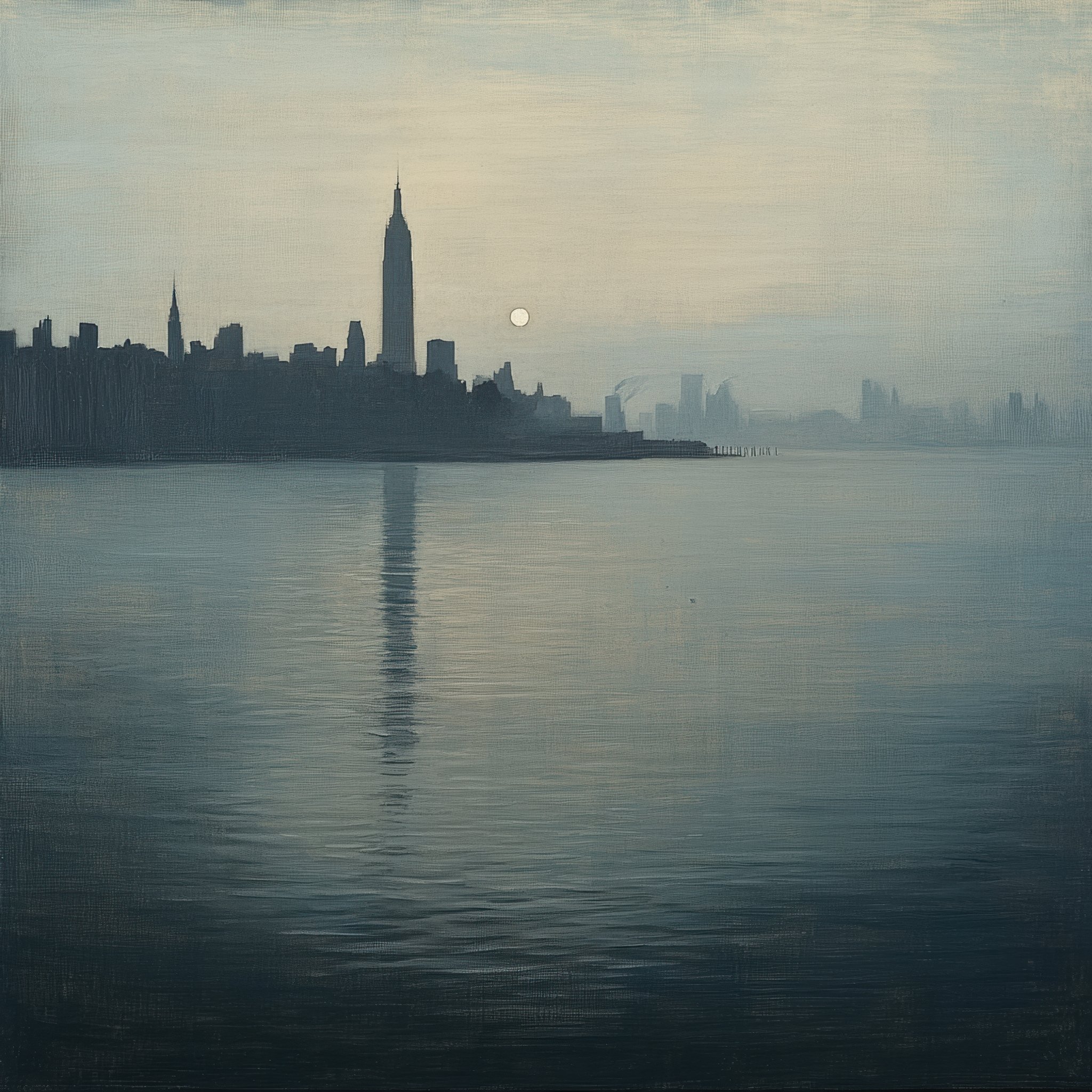
Mia Fendi is an internationally exhibiting AI conceptual artist whose practice bridges memory, imagination, and machine intelligence. Recognised among the ‘115 Best Digital Artists of Our Generation’, she has held two acclaimed solo exhibitions, including a debut at a 16th-century UNESCO World Heritage Site.
Her works have travelled to major cultural hubs—New York, London, Paris, Tokyo, Amsterdam, Miami, Athens, Dubai—and have appeared in global showcases such as the Manga Hokusai exhibition, which toured 20 countries.
A Sotheby’s curator wrote of her work:
“Fendi’s reinterpretation gently weaves a new iconography of female autonomy. Her subjects are not simply faces; they are archetypes, symbols of inner sovereignty in a world rushing toward artificial certainty. Executed with digital finesse yet deeply human in tone, the piece resists the spectacle of hyper-reality. In an era saturated with synthetic perfection, its restraint is refreshing. This work is more than portraiture—it is a meditation.”
Fendi’s ongoing series City Reimagined invites viewers to see the world’s metropolises through the brushstrokes of history’s most influential artists. Each work is crafted to museum specifications—archival pigment prints on fine art paper or Diasec-mounted editions—offered in extremely limited runs, each accompanied by a signed certificate of authenticity.
With a background in banking, diplomacy, and strategic management (MBA), Fendi approaches her art with the same precision and ambition that drive her philanthropic projects, including collaborations benefitting UNICEF’s Every Child Network. Her mission is to create work that transcends trends—offering collectors pieces of enduring cultural and historical value.
ART REVIEWS:
Truly honoured to be reimagined through the lens of AI conceptual artist Mia Fendi—recently featured at New York’s iconic Oculus (and in the metaverse), and celebrated as “one of the defining digital artists of our generation.” The personalised, AI-generated art, shaped from my own photography, represents more than aesthetic innovation; it marks a new chapter in the unfolding dialogue between technology and human expression. What moves me most is the deeper message embedded in the images: that in the hands of a thoughtful creator, AI becomes more than a tool: it becomes a mirror. It has the potential to reveal hidden layers of our humanity and invite a deeper introspection about who we are and what we might become…
♾️
From Sotheby’s:
“Golden Reckoning: Nadja Skaljic as the Modern Goddess of Climate Justice” A Gustav Klimt Reverie Reimagined by Mia Fendi
“At the heart of this work stands Nadja Skaljic—serene yet resolute. Her presence radiates the calm assurance of someone who has already brought her visions to life, her gaze hints at new frontiers still forming in her mind. Set within a dreamlike landscape, the piece unfolds with symbols of a rebalanced world. Wind turbines rise like sculptural sentinels of sustainable energy, while a golden sun beams the enduring promise of solar power—eternal, inexhaustible. Rolling green fields evoke a planet in balance: fertile, thriving, and whole. Her cloak—part garment, part cosmos—is adorned with motifs of regeneration, digital currencies, and ecological symbiosis. The details whisper of a new mythology, where technology and nature are no longer at odds but collaborate as co-authors of a luminous future.“
♾️
“Nadja: Eternal Muse of Inner Sovereignty” An Amedeo Modigliani Invocation Reimagined by Mia Fendi
“In this arresting homage, Mia Fendi channels the ghostly elegance of Modigliani through the lens of AI serving as both mirror and muse. The portrait of Nadja Skaljic emerges as a figure both ancient and ultra-modern—elongated, introspective, and imbued with a haunting serenity. True to Modigliani’s legacy, the composition transcends mere likeness. The almond-shaped eyes become portals, enigmatic and ungraspable. They meet the viewer's gaze and also eclipse it, inviting contemplation. Here, ambiguity becomes a form of intimacy. Nadja’s figure is not observed so much as sensed—grace distilled into line and shadow.
Fendi’s reinterpretation gently weaves a new iconography of female autonomy. Nadja is not simply a subject; she is an archetype, a symbol of inner sovereignty in a world rushing toward artificial certainty. Executed with digital finesse yet deeply human in tone, the piece resists the spectacle of hyper-reality. In an era saturated with synthetic perfection, its restraint is refreshing. This work is more than portraiture—it is a meditation.”
More about Mia Fendi’s work:
https://www.miafendi.com
https://lnkd.in/eqRUBFvE
Cc: Refik Anadol + World Economic Forum
Nadja Skaljic,
The esteemed international lawyer
and member of The Club of Rome,
the preeminent systemic‑change think tank
"Mia has been an incredibly talented artist in our past exhibitions, and we were always thrilled to showcase her work. Her unique style and creative expression have consistently added great value to our events, and we couldn't be happier to have had her as part of our artistic community. We look forward to continuing our collaboration and celebrating her future achievements."
Gulsum Keskinoglu, gallery owner
New York Exhibition
"Mia Fendi’s work is a masterful convergence of classical lineage and digital innovation. As one of the '115 Best Digital Artists of Our Generation,' her art resonates deeply, capturing the essence of modern creativity while paying homage to timeless artistic techniques. Her presence at the Oculus exhibition affirmed her place as one of the most compelling voices in contemporary AI art."
Lorraine Ye, Head Curator of HUG
“With her Sarajevo cycle, Mia Fendi opens current and relevant questions in the field of the ontology of art—bridging cultural heritage and AI in a way that is both provocative and deeply human.”
Ermin Lagumdzija, Art Historian and Curator
of Mia Fendi’s second solo exhibition at
Bosniak Institute - Adil Zulfikarpasic Foundation


